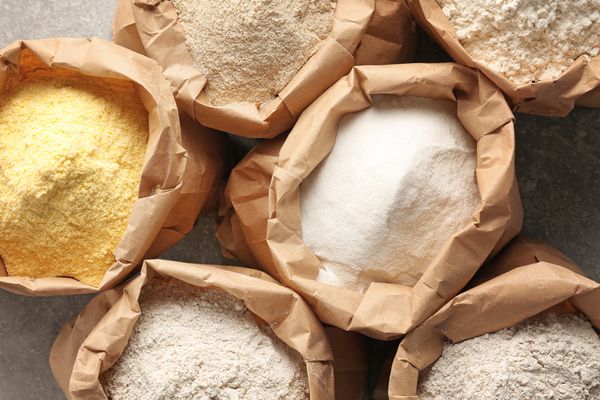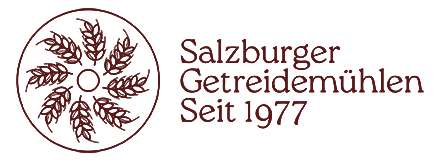
Today we want to answer the question of what types of flour actually are. What about the type designations for flours and what is the difference to wholemeal flour?
Was versteht man unter Mehltypen? The flour type indicates how high the mineral content in the flour is that’s left over when 100 g of flour burnt become. The amount is given in milligrams. That means: the flour type 550 contains 550 mg of minerals in 100 g of flour. It is important to mention that the type designations of flours differ in Germany, Austria and Switzerland. We will come to that later.
The higher the flour type, the higher the mineral content. In Germany, whole-grain flours and whole-grain meal have no type designations, as they contain the maximum amount of minerals. It is worth mentioning that the flour types and the mineral content have nothing to do with the fineness of the flour, i.e. the grain size.
In Germany the type designation of the flours is based on the DIN standard. The type of wheat, spelled and rye flours indicates the mineral content / 100 g flour (e.g .: Wheat flour type 405 , Spelled flour type 630 , Rye flour type 1150 )
In Austria the DIN typing does not apply. The type denotes 1000 times the mineral content in percent of the dry matter. The preceding letter indicates the type of grain (W = wheat, R = rye, spelled without a letter). Type W480 is therefore a wheat white flour and corresponds to type 405 in Germany. In Austria, the grain size is often given for flours. One distinguishes between smooth , handy and double grip .
In the Switzerland there is no official DIN standard. A distinction is made between White flour* (= Wheat flour approx. 65% of the grain), Semi-white flour (= Wheat flour approx. 75% of the grain), Ruchmehl (= Wheat flour approx. 85% of the grain) and Whole wheat flour (= Wheat flour at least 98% of the grain).
The difference between (the vast majority of) type flours and wholemeal flour is that that Whole wheat flour contains all the important minerals contains . In addition, valuable vitamins, phytochemicals and fiber. Especially if you’re fresh with a Salzburg flour mill grinds. If you want even finer, home-ground wholemeal flour, we have it too traditional flour sieves for you. A loss of nutrients can practically not go hand in hand here.
If you have any questions or comments on this topic, we look forward to a comment or a message (e-mail to j.fuschelberger@agrisan.at ) of you! Bye for now!
https://de.wikipedia.org/wiki/Mehl#Typisierung_in_Deutschland_nach_DIN
https://agrisan.at/aufbau-eines-getreidekorns/
*In Switzerland White flour instead of White flour .
That was: What are types of flour?
Address:
Gasteigweg 25,
5400 Hallein
Austria
Opening hours:
Monday to Thursday: 09 – 16:00
Friday: 09 – 12:00
Contact:
Phone: +43 6245 83282
E-mail: info@agrisan.at
Address:
Gasteigweg 25,
5400 Hallein
Austria
Opening hours:
Monday to Thursday: 09 – 16:00
Friday: 09 – 12:00
Contact:
Phone: +43 6245 83282
E-mail: info@agrisan.at

